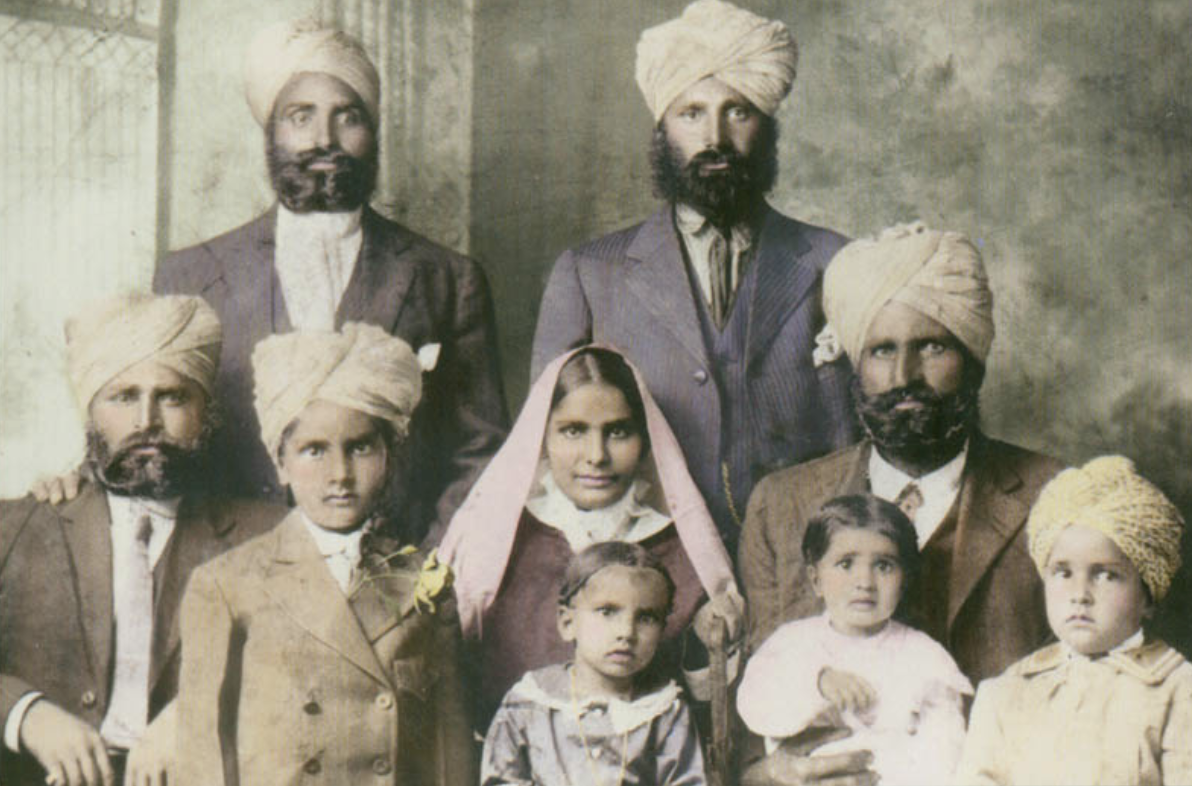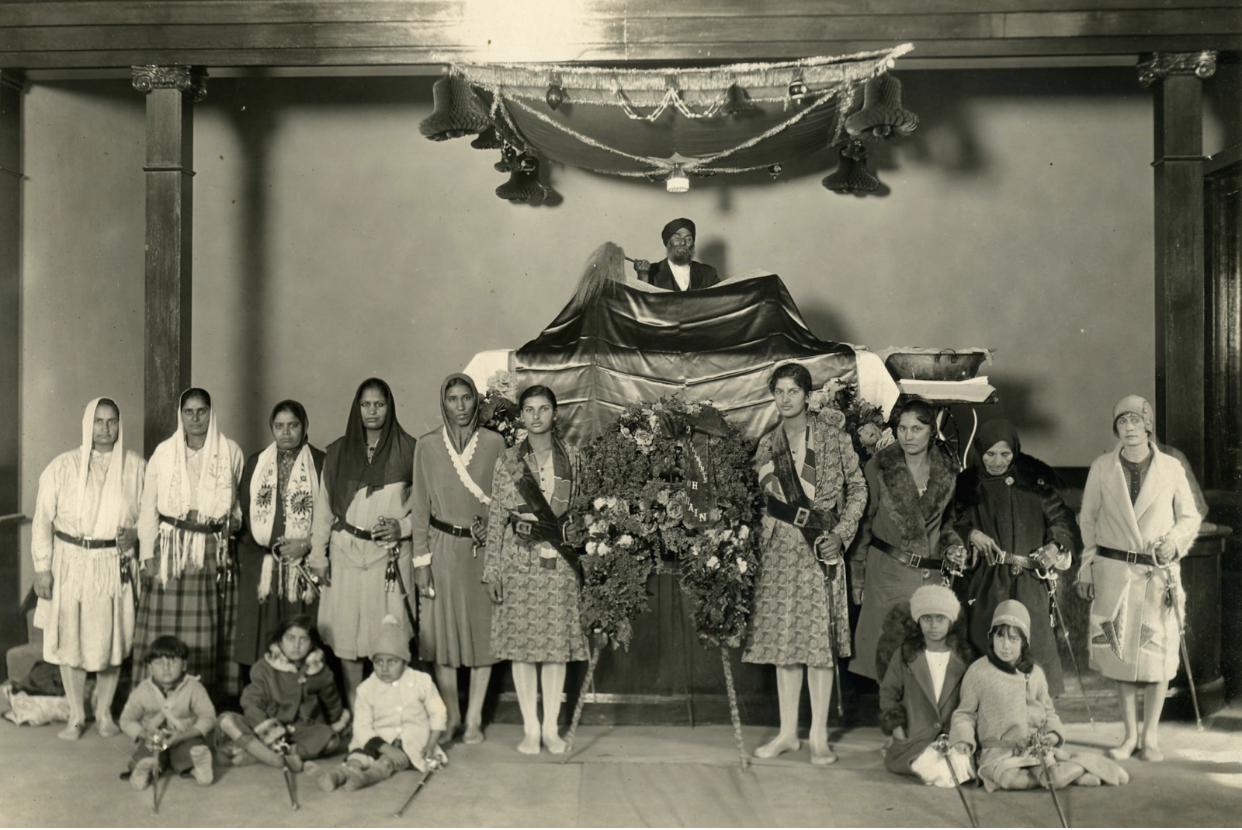Kartar Kaur Dhillon
The richest account of the early history of Punjabi women’s lives in the United States emerges from Kartar Kaur Dhillon’s autobiographical writings. Born in California in 1915, Kartar was the first Sikh woman born in the United States. Her father, Bakshish Singh Dhillon, was the earliest recorded Sikh migrant to enter the U.S. in 1897. Her mother, Rattan Kaur, was likely the first Sikh woman to settle in the U.S. when she arrived with her husband in 1910 at the age of 17. Her family was deeply involved in the gadar (revolutionary) movement aimed at overthrowing British rule in India, and also in organizing workers to join the Industrial Workers of the World (IWW). Bakshish advocated for the political and economic rights of the Punjabi community in Hammond Lumber Mill in Astoria, Oregon. His service in the British Army in China and his extensive world travels had politicized him. As one of the few workers who was fluent in Punjabi and in English, he played a vital role in informing fellow Punjabi workers about the American labor and anti-colonial activities, recruiting them to both causes.
Kartar Kaur Dhillon was an activist who fought for India’s freedom from British rule, and for the rights of women, workers, and peoples of color. Her family’s ardent support for the gadar movement led to her life-long dedication to activism. When interviewed about her participation in the gadar movement, Kartar asserted: “Every member of my family was a part of it. We lived for the Gadar party.” (“Interview with the Iron Lady,” Dr. Jasbir Singh Kang, Sikhnet, 2001).
As a single mother, Kartar raised her three children in San Francisco where she participated in many struggles against class, gender, and racial oppression. She had divorced her husband when he reneged on his promise to support her advanced education and activism. She protested against the Ku Klux Klan and helped Black Panthers activist Kathleen Cleaver with her own political writings. In addition, Kartar was a powerful writer of women’s experiences in South Asian American history.

Rattan Kaur and her husband, Bakshish Singh Dhillon (on the right). Kartar sits on her father’s lap, 1916. Courtesy: South Asian American Digital Archive.

To learn more about Kartar Kaur Dhillon’s life, read her writings: “A Parrot’s Beak,” South Asian American Digital Archive, https://www.saada.org/tides/article/the-parrots-beak, 1989; and, “Astoria Revisited and Autobiographical Notes,” https://web.archive.org/web/20150322084852/http://www.sikhpioneers.org/P1astoria.html, 1995.
See also interviews with Kartar Kaur Dhillon: “Witness to the Ghadar Era,” The Ghadarite, Berkeley, CA, 2001; and, “Interview with the Iron Lady,” Dr. Jasbir Singh Kang, Sikhnet, 2001.
Sikh women with Kartar Kaur Dhillon (right of the wreath) and her mother, Rattan Kaur (second from the left in plaid), Gurdwara, Stockton, CA, 1927. Credit: UC Berkeley Bancroft Library.
